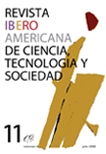Science, Technology, and Sustainability
Presentation
Abstract
Since the very moment it was coined by the United Nations World Commission on Environment and Development around 1987, the notion of sustainable development has been as widely promoted as it has been debated. Likely due to the forcefulness of the criticism it has received—and in an effort to avoid what many consider a blatant oxymoron—recent times have seen a preference for speaking simply of sustainability. Sustainability on its own is presumed to be emancipated from the economistic burden imposed by its association with development, and its scope extends well beyond the borders of the economy. However, this shift in terminology has not substantially altered the core virtue of that particular definition from the Brundtland Report, which, let us recall, emphasized needs (especially those of the poor) and limitations (both of our sciences and technologies and of our environment). Its virtue lies above all in offering hope to anyone who aspires to live in a healthier, kinder, and more beautiful world—particularly to those who are furthest from it. If, as the well-known contemporary slogan goes, "another world is possible," then that other (better) world must be a sustainable one. What is sustainable is, in any case, defined in contrast to what is unsustainable. The concept of sustainability arises from a set of tensions—tensions that can either be withstood or not, depending on whether actions are taken sustainably or unsustainably.
Downloads
Downloads
Published
How to Cite
Issue
Section
License
Copyright (c) 2025 CC Attribution 4.0

This work is licensed under a Creative Commons Attribution 4.0 International License.
All CTS's issues and academic articles are under a CC-BY license.
Since 2007, CTS has provided open and free access to all its contents, including the complete archive of its quarterly edition and the different products presented in its electronic platform. This decision is based on the belief that offering free access to published materials helps to build a greater and better exchange of knowledge.
In turn, for the quarterly edition, CTS allows institutional and thematic repositories, as well as personal web pages, to self-archive articles in their post-print or editorial version, immediately after the publication of the final version of each issue and under the condition that a link to the original source will be incorporated into the self-archive.











